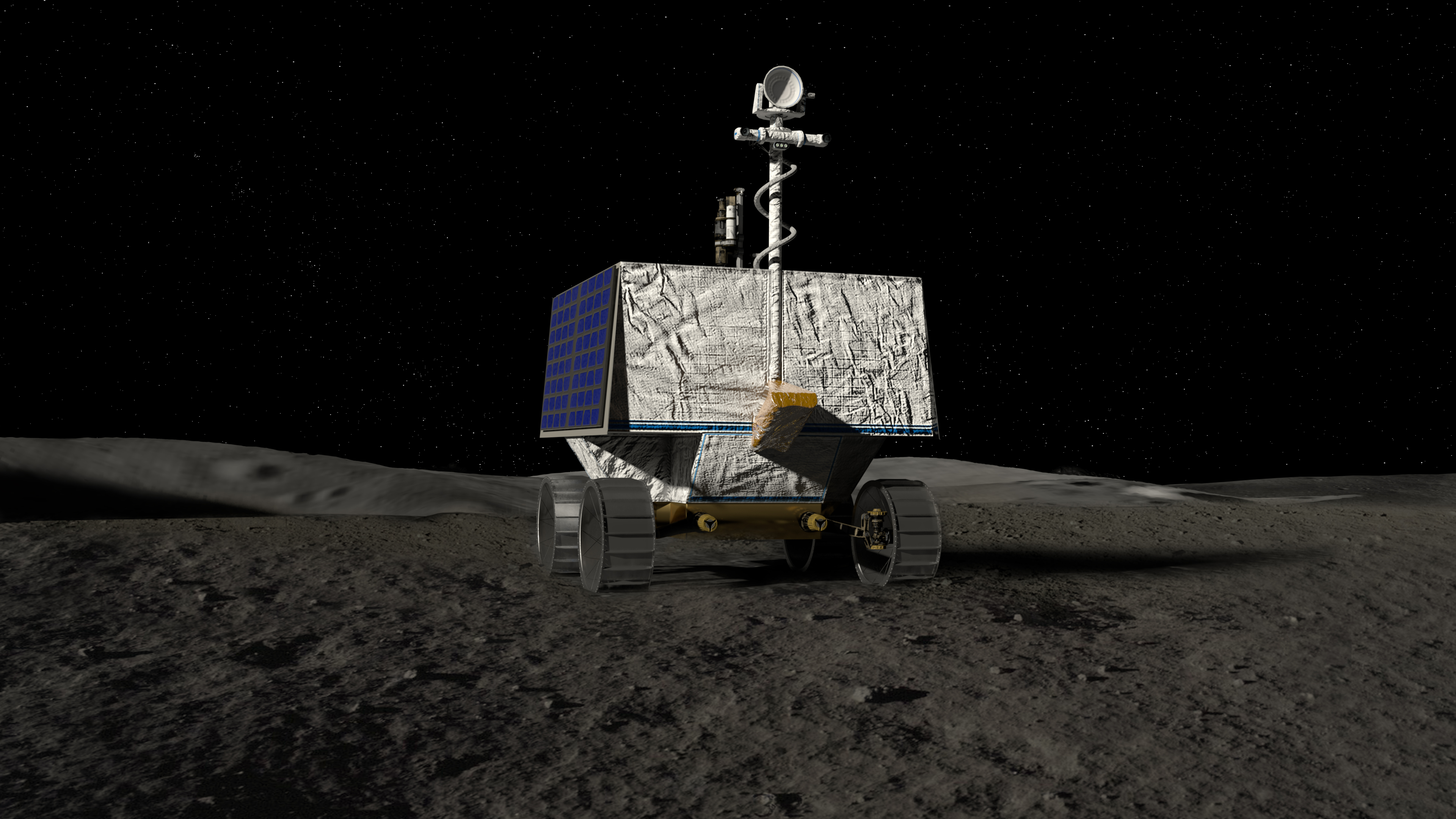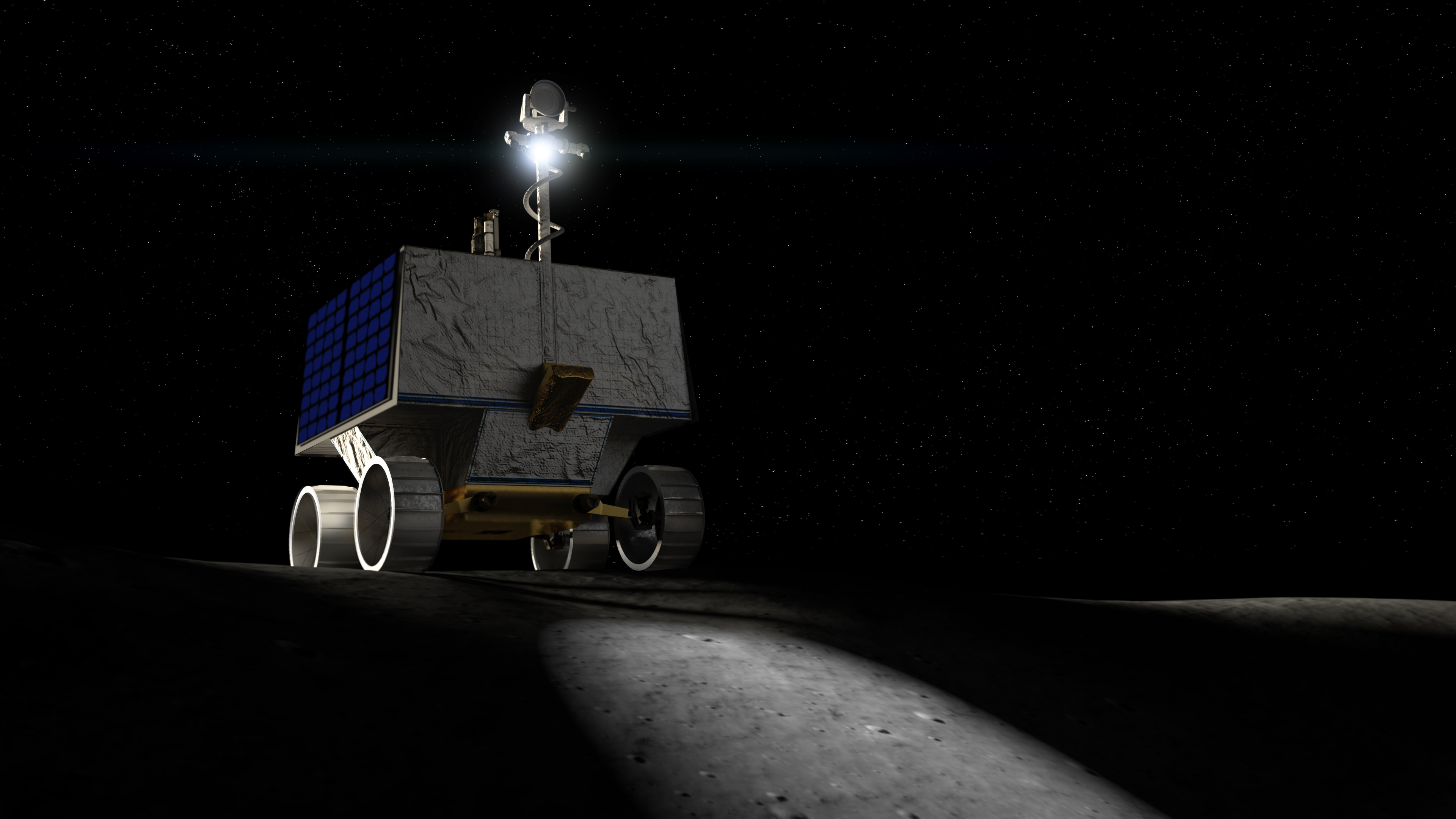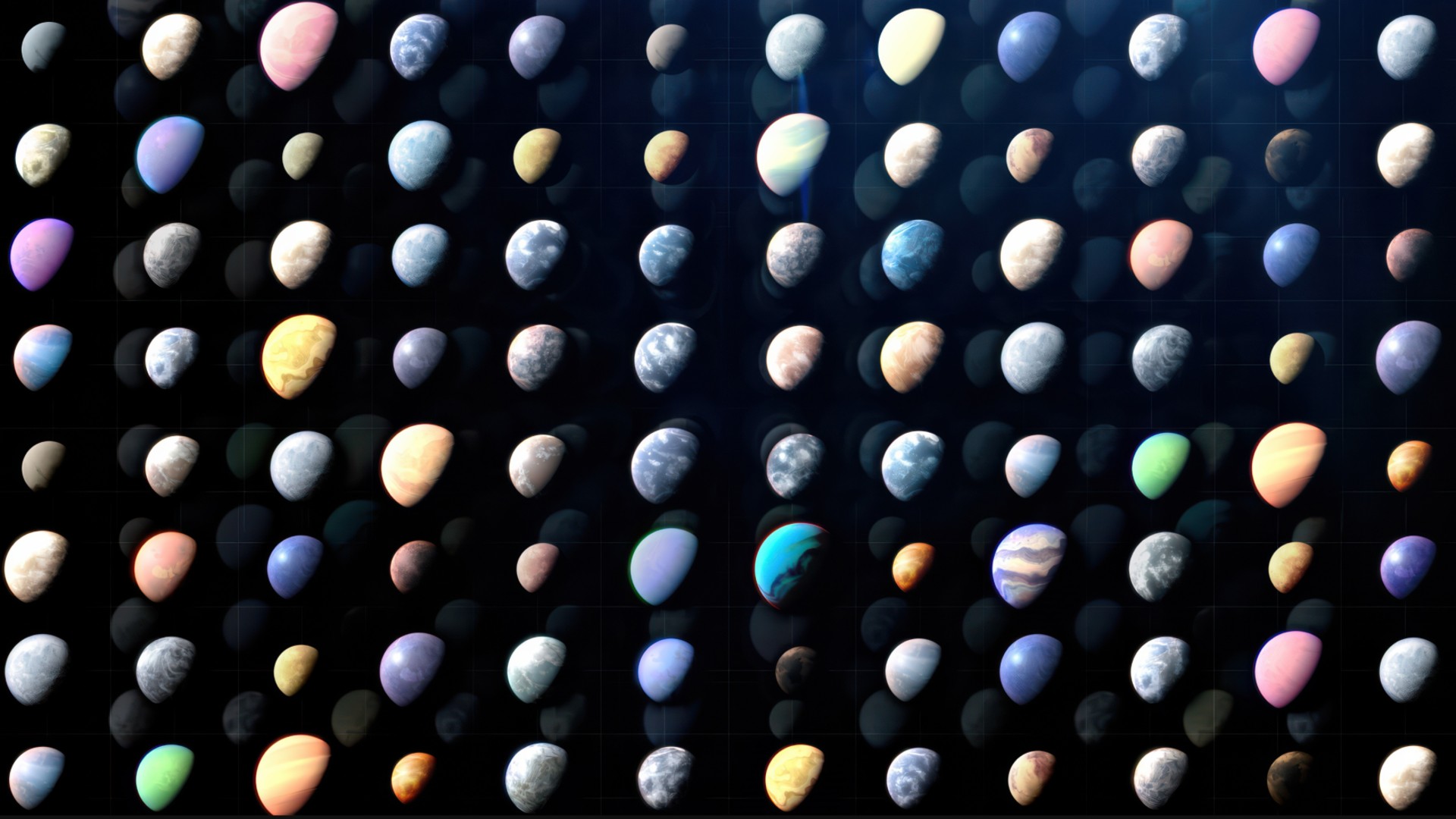NASA picks Astrobotic to land ice-hunting VIPER rover at the moon's south pole
The mission will launch in 2023!
A Pennsylvania-based space company called Astrobotic has taken on a dramatic new task for NASA: deliver a VIPER to the moon.
Not a snake, of course. Astrobotic's payload will be a large rover designed to sniff out water ice buried below the lunar surface, dubbed the Volatiles Investigating Polar Exploration Rover, or VIPER. The launch, which is currently scheduled for late 2023, is a keystone piece of NASA's Artemis program to land humans at the moon's south pole in late 2024.
"The VIPER mission will search for ice and map resources to bring us a significant step closer to NASA's ultimate goal of a sustainable long-term presence on the moon," Thomas Zurbuchen, NASA's associate administrator for science, said during a news conference held Wednesday (June 11). "This will help make it possible for humans to eventually explore Mars and beyond."
Related: NASA wants to send a water-sniffing rover to the lunar south pole

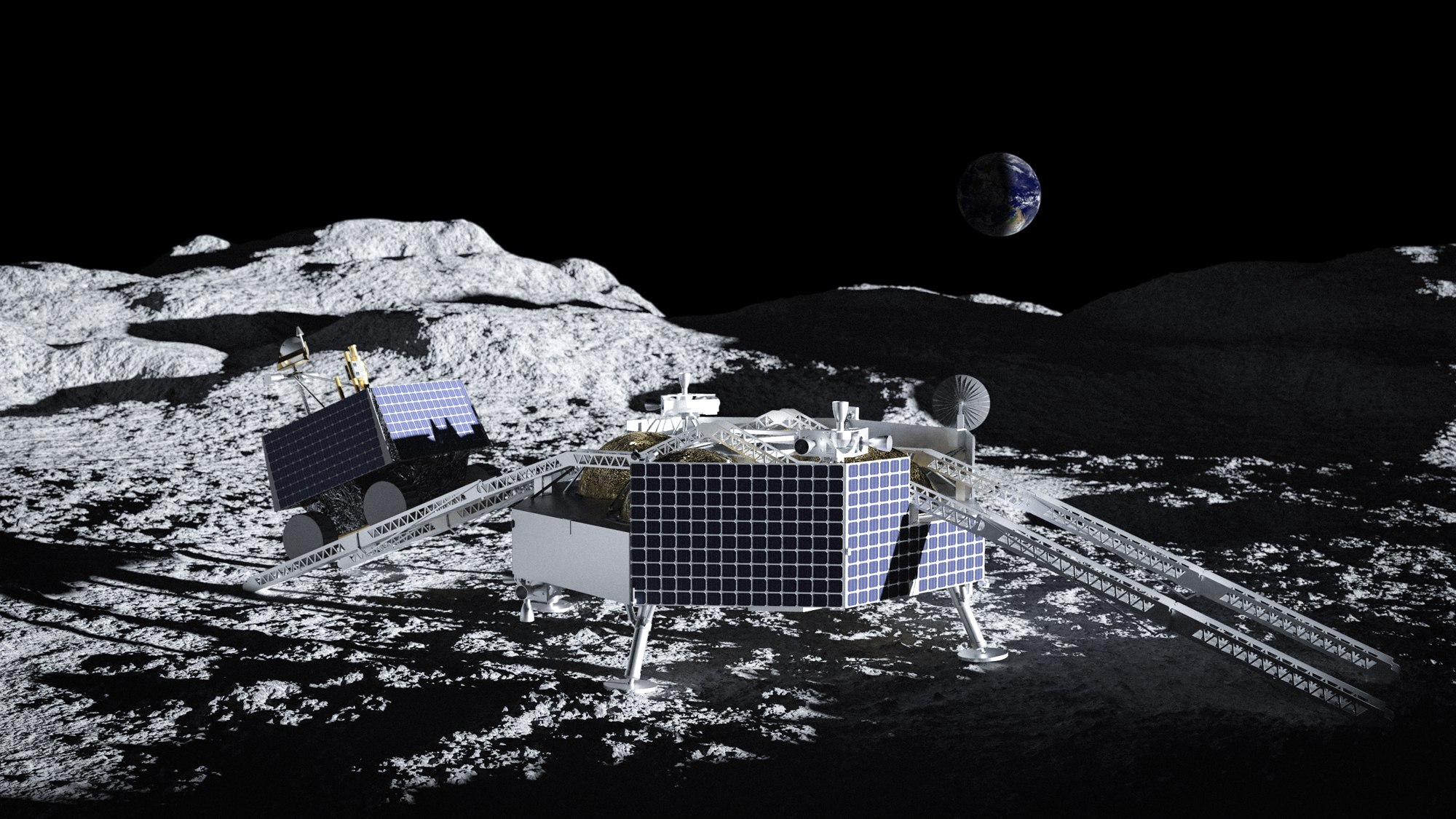
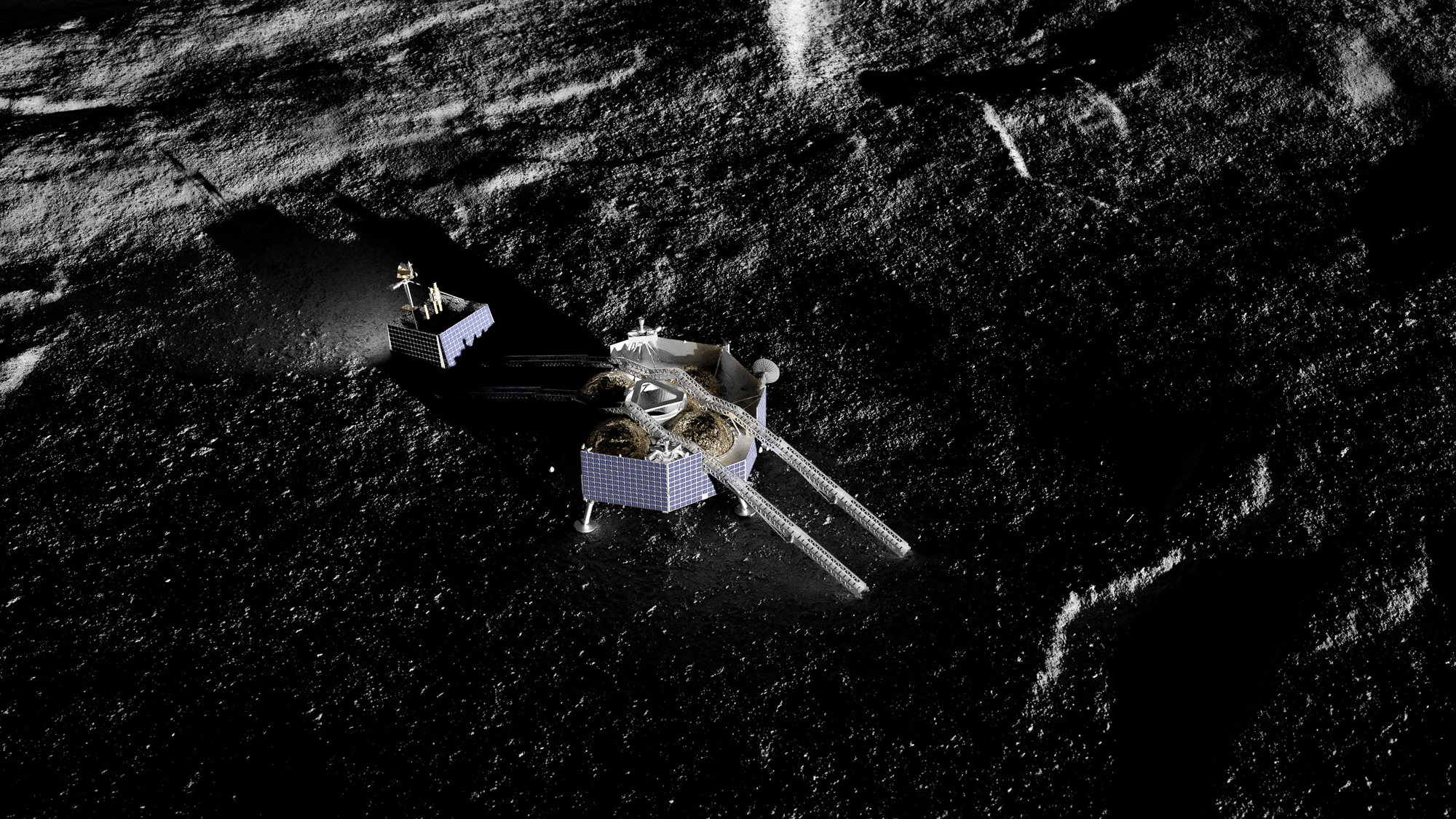
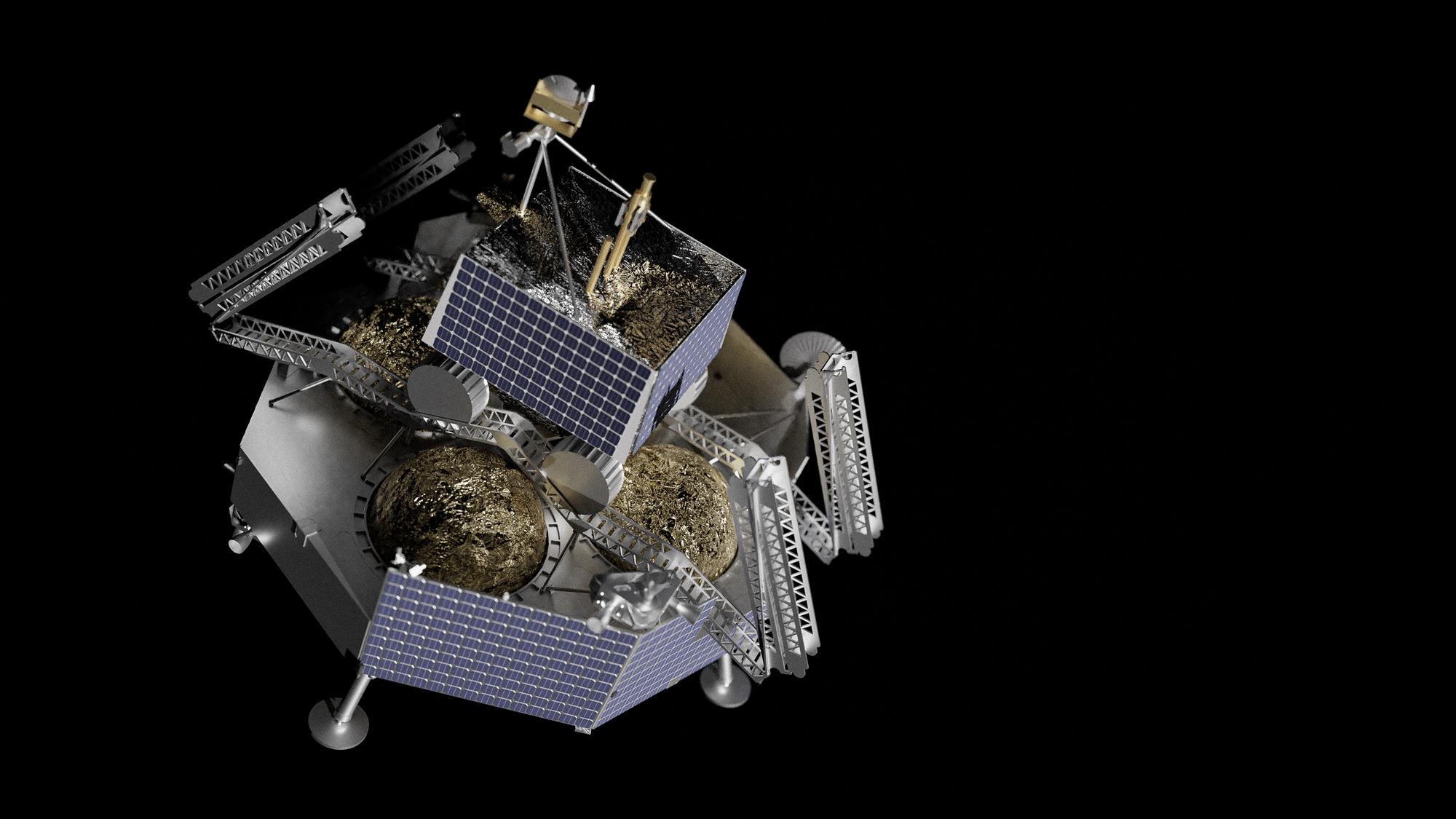
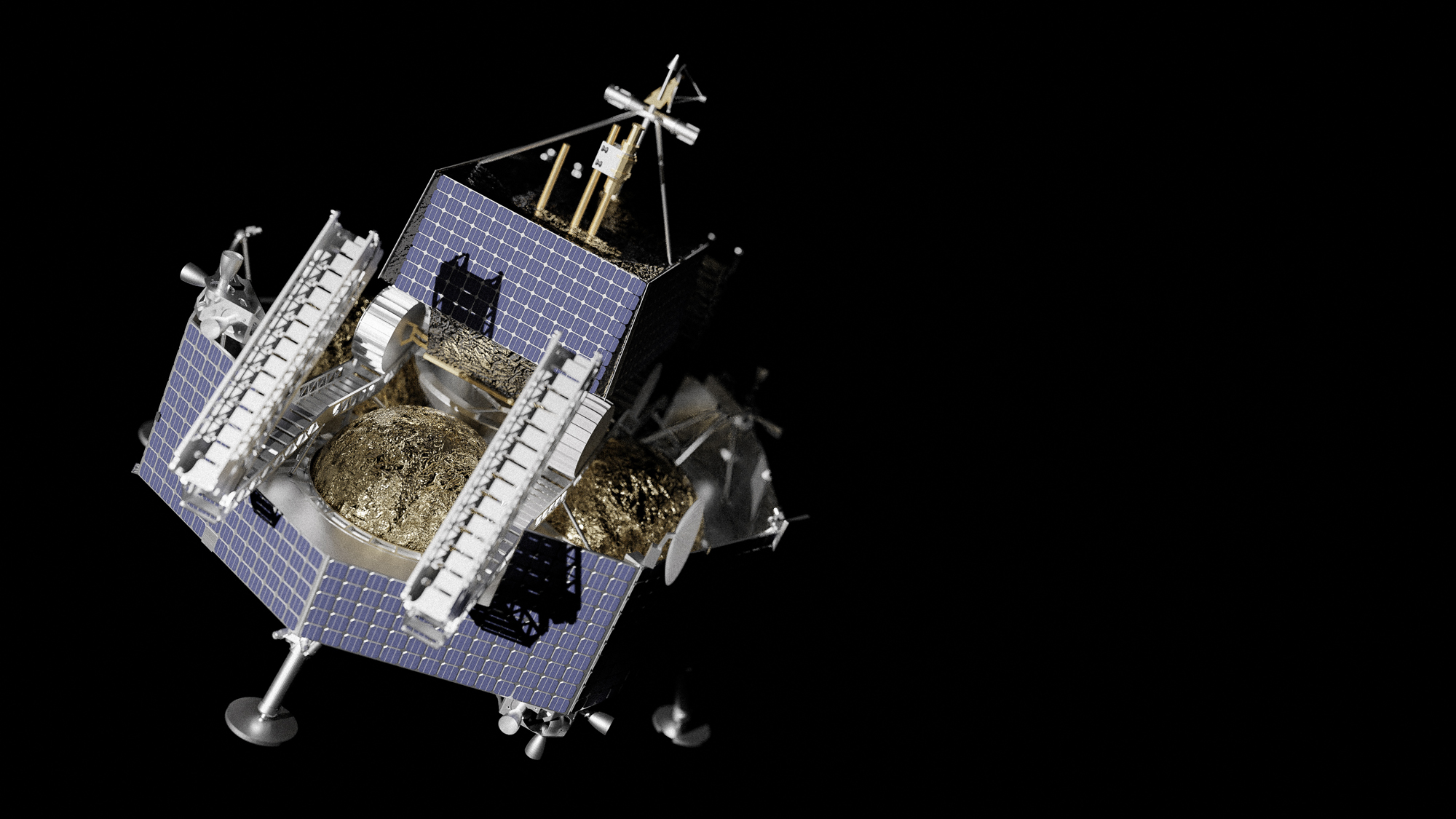
The delivery contract comes as part of NASA's Commercial Lunar Payload Services program, under which the agency hires private companies to fly NASA instruments and experiments to the lunar surface, rather than delivering them on agency machinery.
"Today marks another exciting milestone for a new era of science, exploration and commerce on the moon," John Thorton, Astrobotic's CEO, said during the news conference. "The rover will no doubt be a historic mission."
The new landing contract is worth $199.5 million as a fixed-cost fee for every aspect of the launch and landing, according to a NASA statement. Astrobotic will independently hire a rocket launch company, yet to be determined, to execute that phase of the mission.
Breaking space news, the latest updates on rocket launches, skywatching events and more!
Astrobotic also holds one of the first two missions under the Commercial Lunar Payload Services program, to deliver a lander carrying small science and technology payloads on the moon next year. That preliminary Astrobotic mission will launch on a small lander called Peregrine. VIPER will require a much larger vehicle, since it clocks in at 1,000 lbs. (450 kilograms). The Astrobotic lander for the larger payloads is called Griffin.
VIPER's primary role will be to help scientists better understand orbital data that hints to where ice reserves may be lurking under the moon's surface. Much of that data comes from NASA's Lunar Reconnaissance Orbiter, which has been at work since 2009. But although its decade of observations have built up a valuable trove of lunar measurements, scientists need to get closer to the surface to truly understand them.
Hence VIPER. NASA's theory is that the rover can study ice in a small region of the moon's south pole up close. Such work will include measuring its abundance, understanding what form it takes, and measuring how clean it is, among other tasks. Then scientists can compare those observations with orbital data. That comparison should sharpen their understanding of ice around the moon, far beyond VIPER's immediate reach.
To do so, the rover will carry four instruments, including a drill capable of reaching about 3 feet (1 meter) below the moon's surface. Copies of three of the four instruments, Zurbuchen said today, will be flown on earlier missions as a way to test their performance before the rover launches.
"VIPER will be the first robot to actually touch this water ice that we've detected from many different previous missions," Daniel Andrews, the project manager of the VIPER mission and director of engineering at NASA’s Ames Research Center in California, said during the news conference. "Certainly I think VIPER is a gamechanger here."
VIPER is heavily based on a previous NASA project, Resource Prospector, which was cancelled in 2009. The new mission folds that legacy into NASA's new goal of landing humans on the moon by 2024, a deadline that most consider ambitious.
Unlike any lunar rover to date, VIPER will be designed not just to withstand the frigid, two-week-long lunar nights, but also to continue gathering data during that time. Most surface projects that have survived lunar sundown have worked during the day and powered down at night to reduce risk.
When the rover was first announced, NASA was aiming for it to land on the moon in late 2022. By the beginning of this year, that date had slipped to 2023. That delay was to allow the team time to build in that long-term lifespan and ability to survive the lunar night, Zurbuchen said.
NASA briefly considered launching early that year, but that window would have sent the rover to the north pole, Zurbuchen said during the news conference. The agency decided to wait until later in the year, when a launch will send VIPER to the south pole, where humans are bound for the Artemis landing.
The launch delay will not impact NASA's ability to gain the insights from VIPER that it wants to apply to the human landing, Zurbuchen said. However, because of the decision to emphasize long-term observations, NASA cannot yet provide an official mission cost estimate.
- NASA wants to send a water-sniffing rover to the lunar south pole
- The 21 most marvelous moon missions of all time
- The greatest moon crashes of all time
Email Meghan Bartels at mbartels@space.com or follow her @meghanbartels. Follow us on Twitter @Spacedotcom and on Facebook.
OFFER: Save 45% on 'All About Space' 'How it Works' and 'All About History'!
For a limited time, you can take out a digital subscription to any of our best-selling science magazines for just $2.38 per month, or 45% off the standard price for the first three months.

Meghan is a senior writer at Space.com and has more than five years' experience as a science journalist based in New York City. She joined Space.com in July 2018, with previous writing published in outlets including Newsweek and Audubon. Meghan earned an MA in science journalism from New York University and a BA in classics from Georgetown University, and in her free time she enjoys reading and visiting museums. Follow her on Twitter at @meghanbartels.
